ベラ。特にフラッシャーラス。それは安易に踏み入れてはいけない世界。超高速で縦横無尽に泳ぎまわるそれらをフレームに収めることが、先ず無理難題なわけであり、、ましてやライティングを整え、鰭が全開となった瞬間にピントを合わせるなど、理解の範疇を超えている。
こうした撮影の複雑さに加え、複数バージョンある婚姻色や、鰭の開閉の状況によって別種の如く変容するため、無数に紛れる中からターゲットの個体に狙いを定めるのも難しい。素人を寄せ付けない領域なわけである。
しかしながら、ここ東南アジアには日本では見ることができない、いくつもの美しいクジャクベラ属、イトヒキベラ属が生息している。尻込みしているのはもったいない、、意を決して足を踏み入れることとしたのである。
その撮影はまさにシューティングゲームであり、下手な鉄砲を数撃った結果でありますが、以下ご笑覧ください。
Wrasses, especially Flasher Wrasse. I used to think of it as a realm one should not easily venture into. First of all, capturing those creatures that swim around at lightning speed in all directions within a frame is a hopeless task. Moreover, refining the lighting and focusing at the moment when their fins are fully spread is beyond the scope of understanding. In addition to the complexity of such photographic techniques, the difficulty of identification is also compounded by the multiple color variations in marriage, and the transformation into a different species depending on the opening and closing of the fins. This creates a world that is difficult for amateurs to approach.
However, here in Southeast Asia, there are many species that cannot be seen in Japan, and with this rare opportunity of having a base in this region, I decided to bravely step into this world. The photography is truly like a shooting game, and the result is the outcome of firing a few shots with a mediocre gun. Please take a look below.
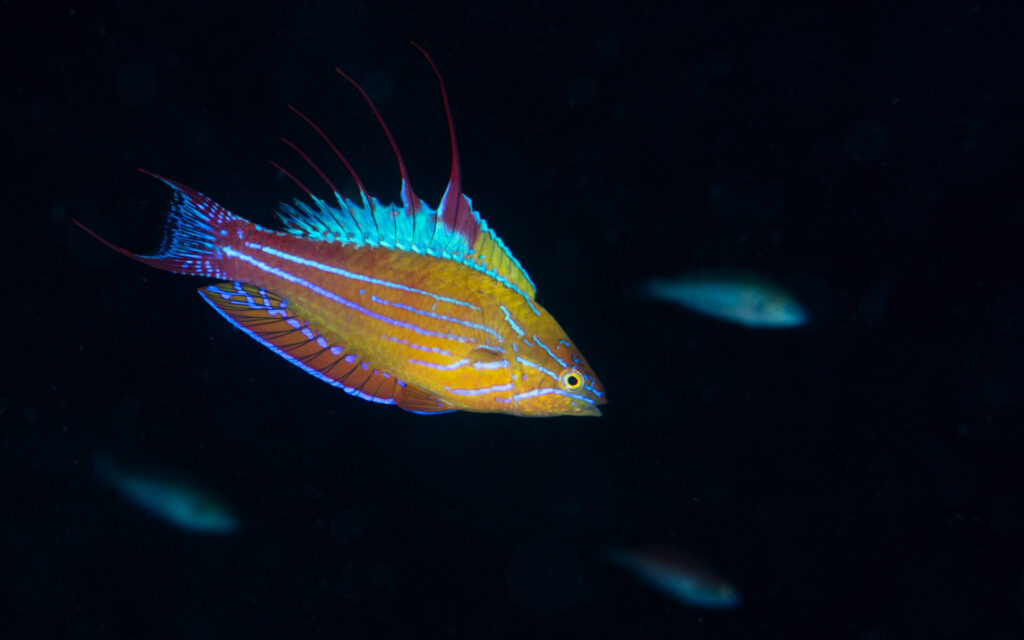
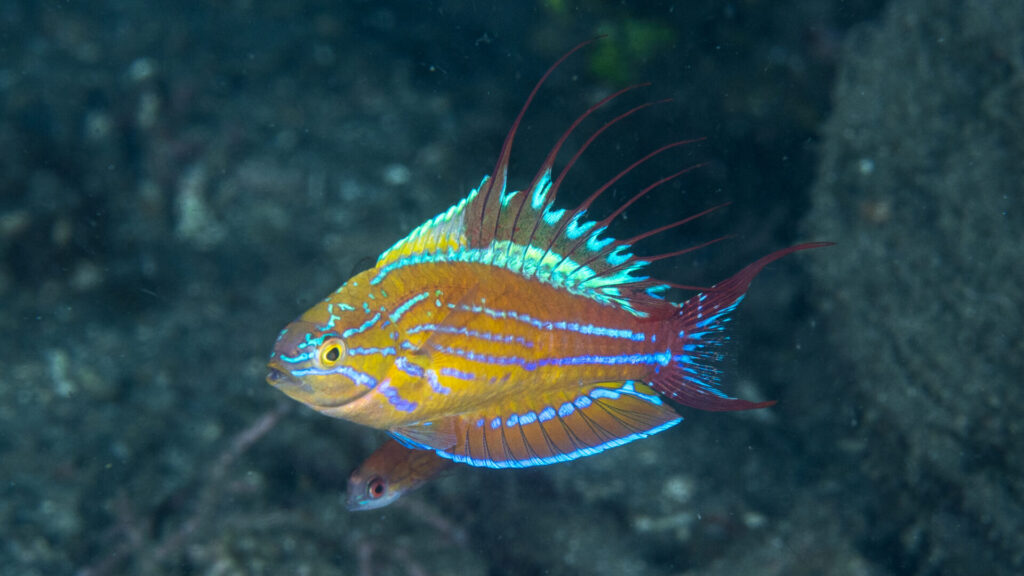
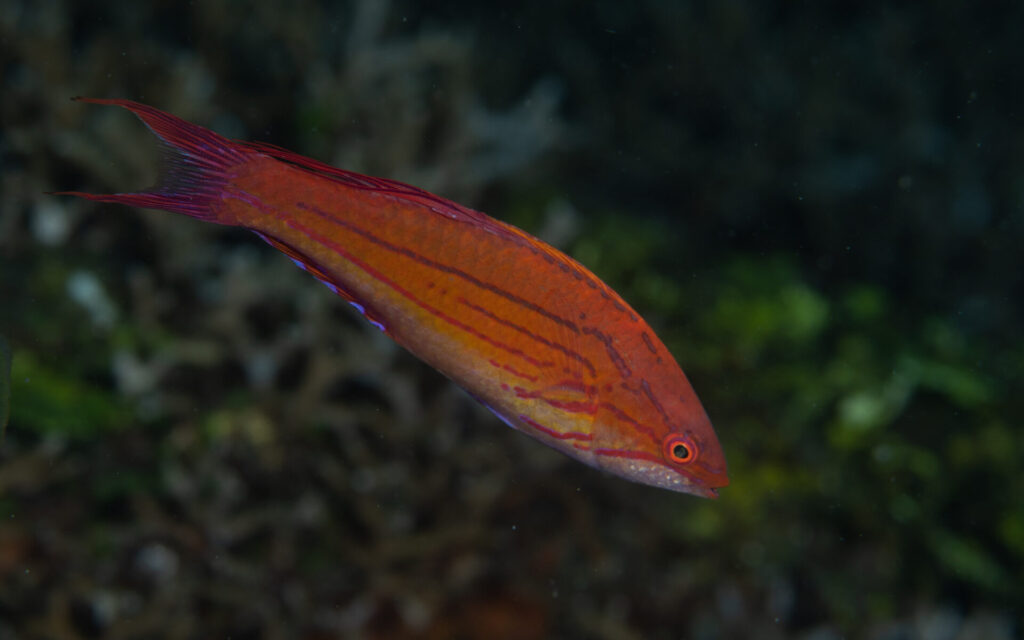
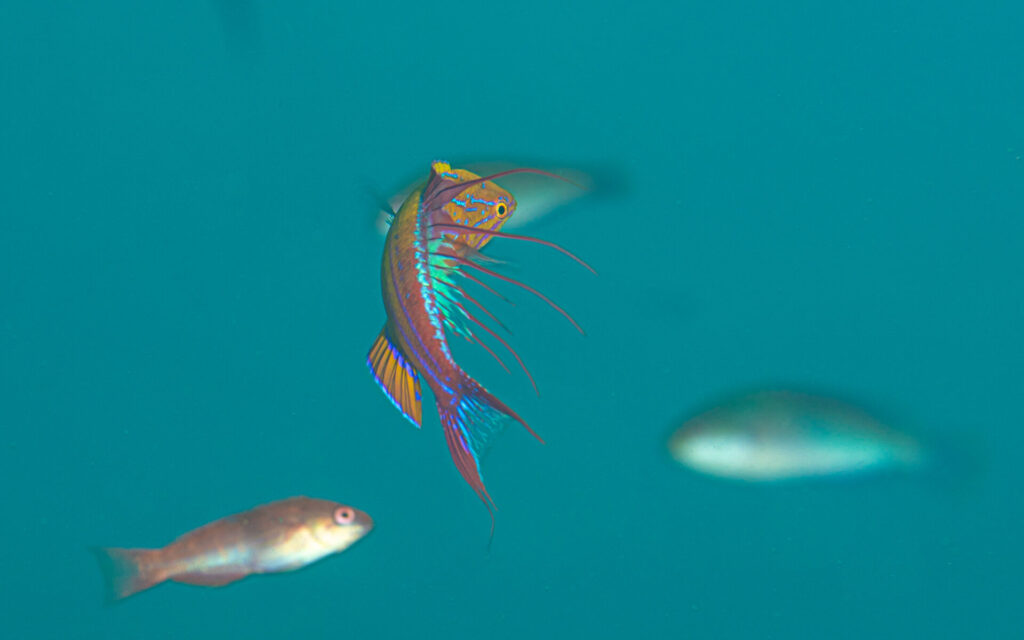
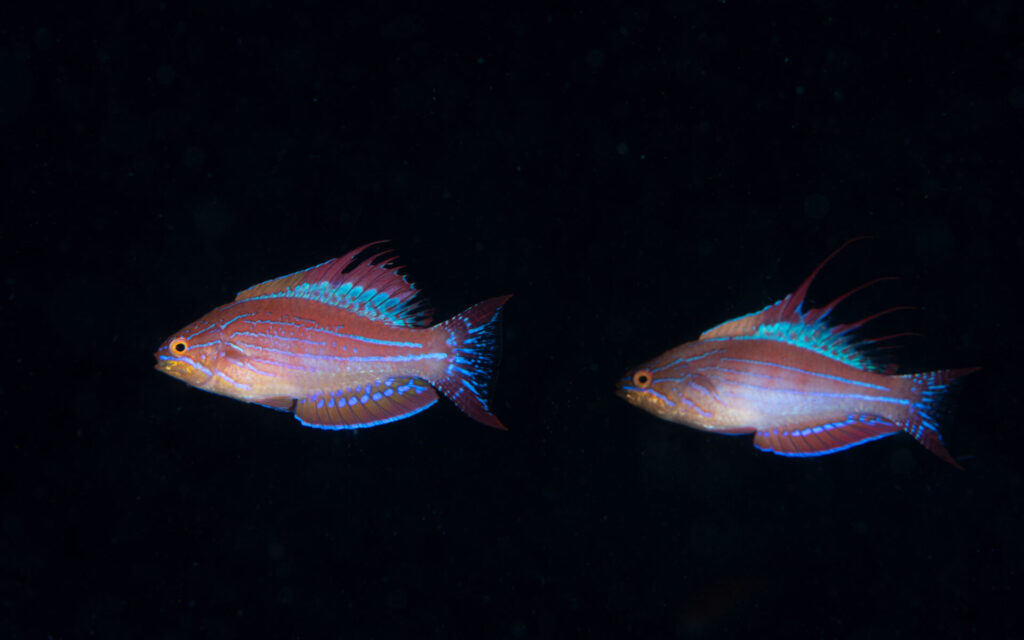
まずはレンベからフィラメンテッドフラッシャーラス(Prachieilinus filamentosus)です。日本にも生息するクジャクベラのようですが、尾鰭が二股に分かれている別種となります。日没前後にかけてメスを追い回してフラッシングします。生息環境はかけ下がりのガレ場です。これは全ベラ共通の好みのなのでしょうか。ピンクの個体は若い雄だと思われ、メスを追いかけずに雄同士でじゃれあっていました。
First, from Lembeh, we have the Filamented Flasher Wrasse (Paracheilinus filamentosus). At first glance, it may resemble the Peacock Wrasse found in Japan, but it is a different species with its tail fin split into two. It is seen flashing, especially around sunset, as it chases females. The pink individuals are likely young males, engaging in playful interactions with each other without pursuing females.
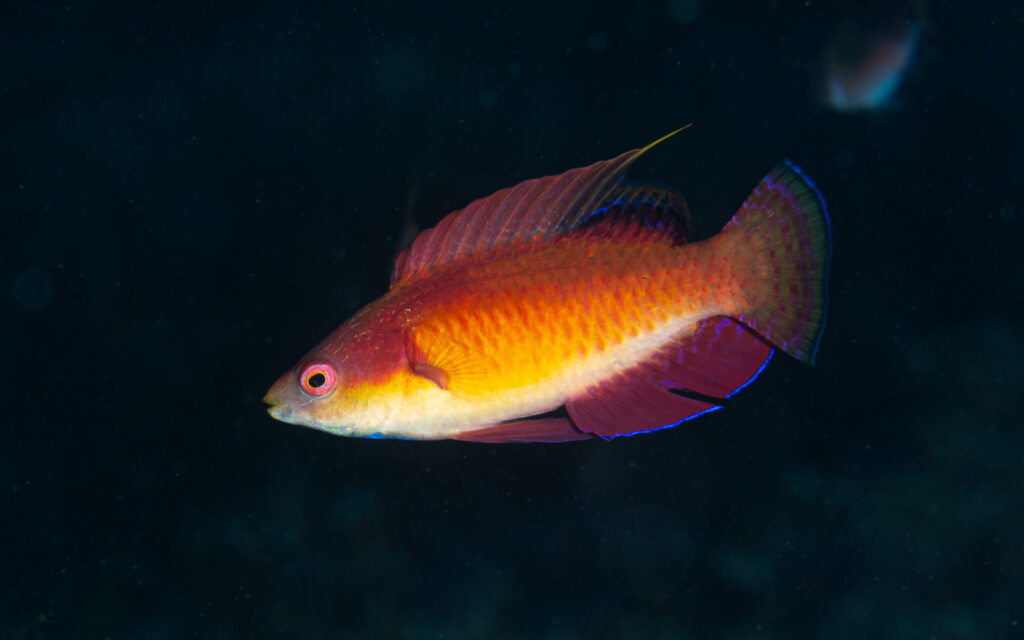
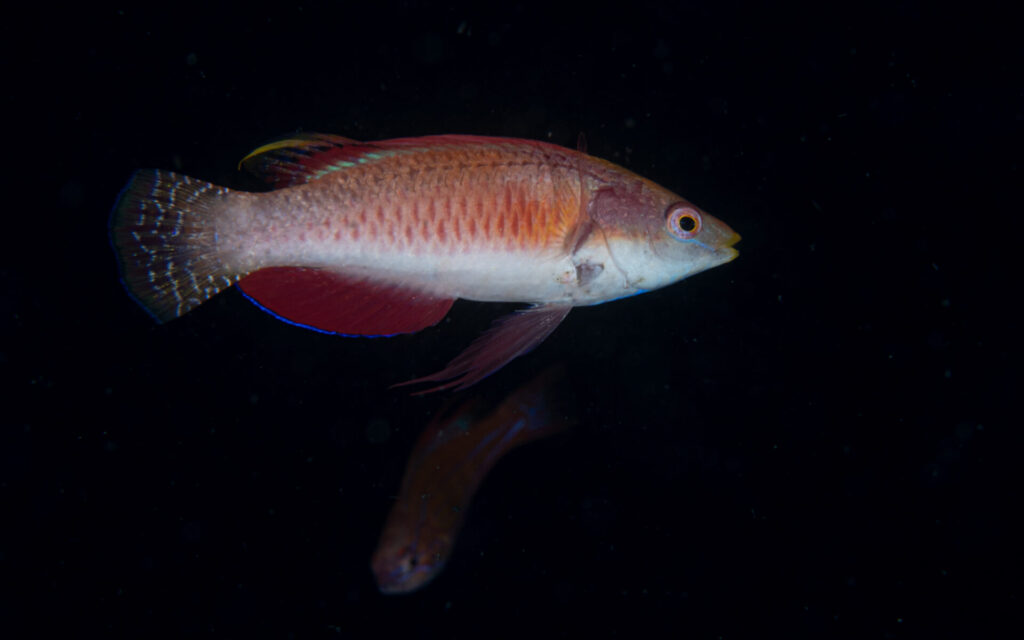
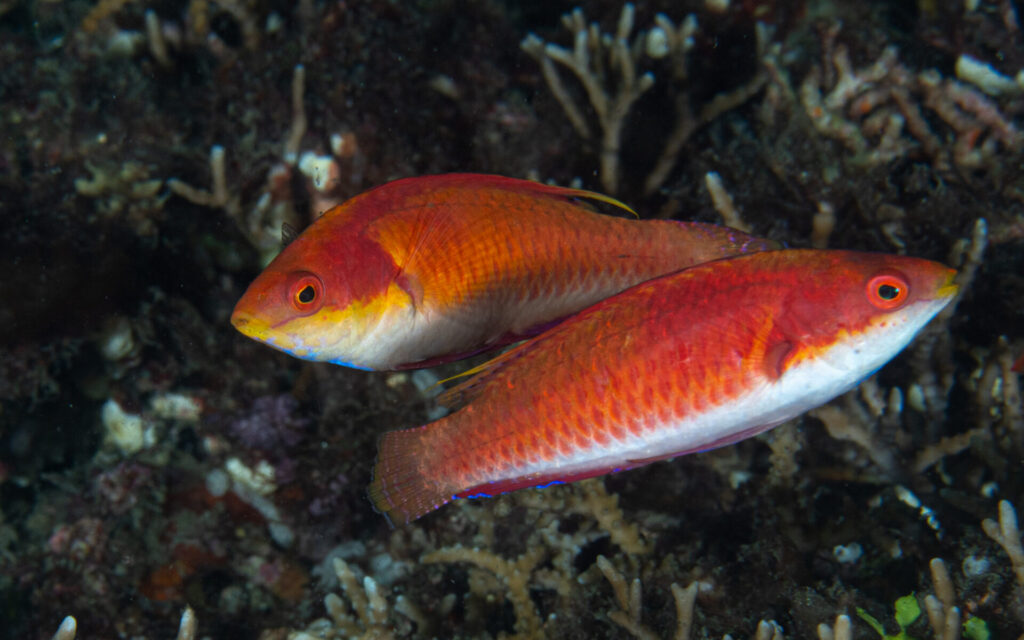
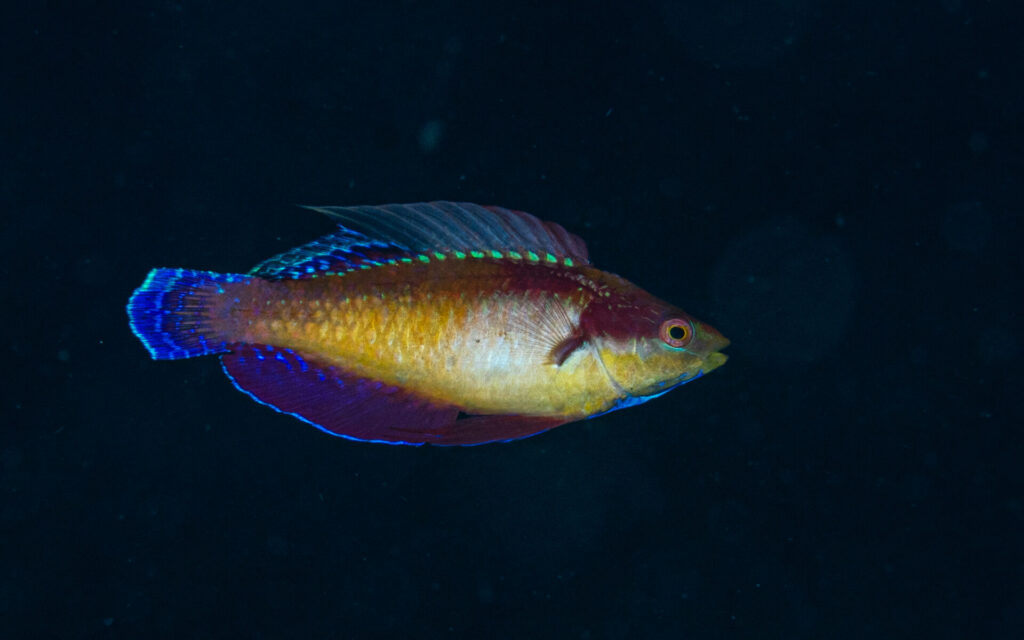
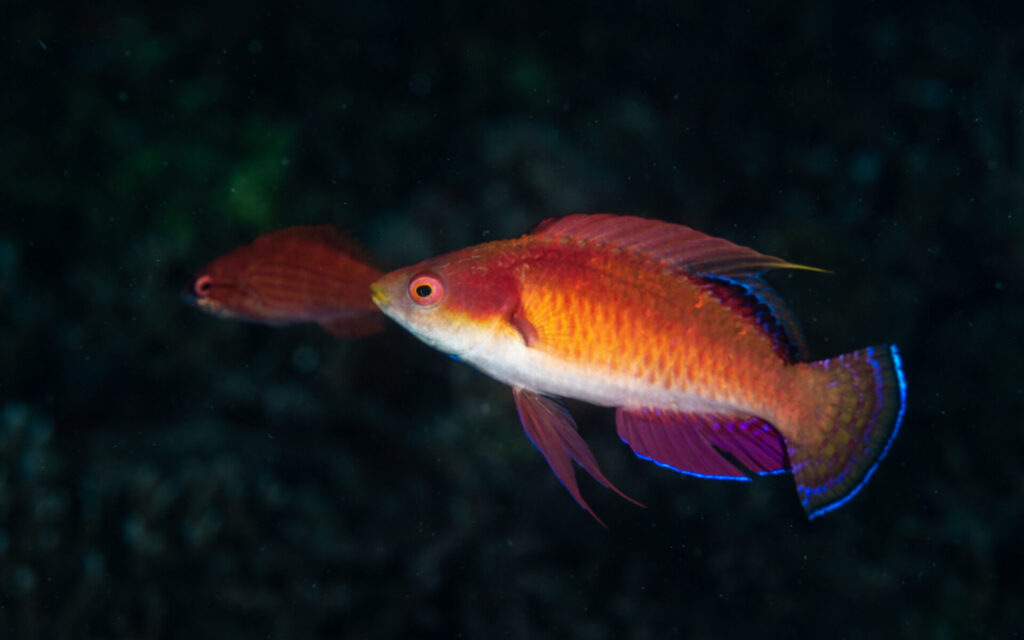
続いても同じくレンベから、トノズラス(Cirrhilabrus tonozukai )です。イトヒキベラ属です。。帆がかかったかのような背鰭が美しく、また様々な体色に変化してみせます。メスを追いかけているときの本気モードでは、濃い赤とオレンジが印象的ですが、リラックスしてくると段々と白みがかった体色に変化しています。
Next from Lembeh as well, we have the Tono’s Fairy Wrasse (Cirrhilabrus tonozukai). The sail-like dorsal fin is beautifully distinctive, and it exhibits a range of color variations. As you can see, during serious pursuits of females, the intense red and orange hues are striking. However, as it relaxes, the color gradually shifts to a more whitish tone.
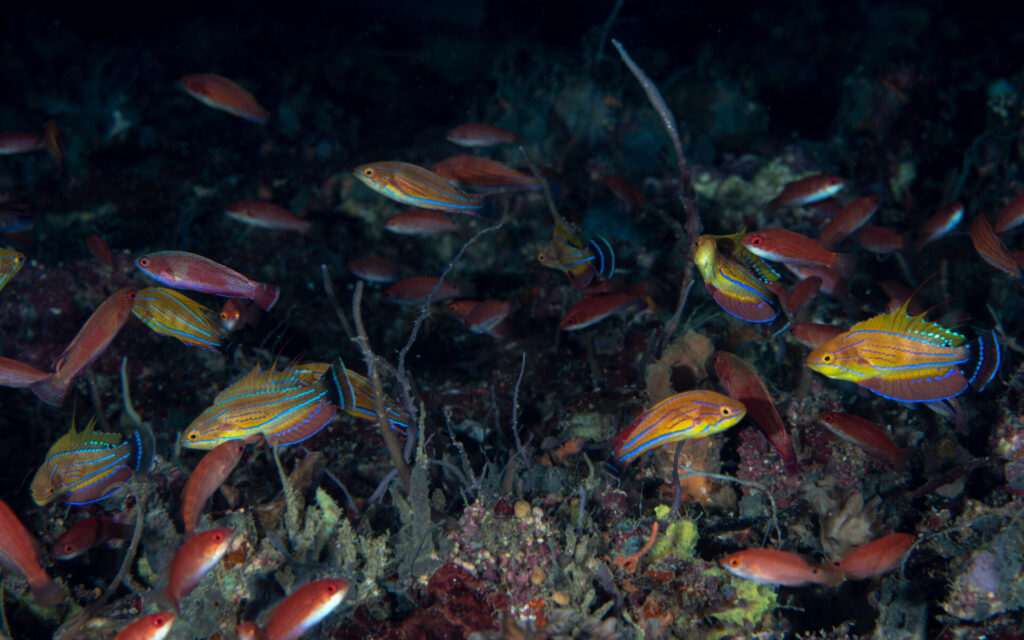
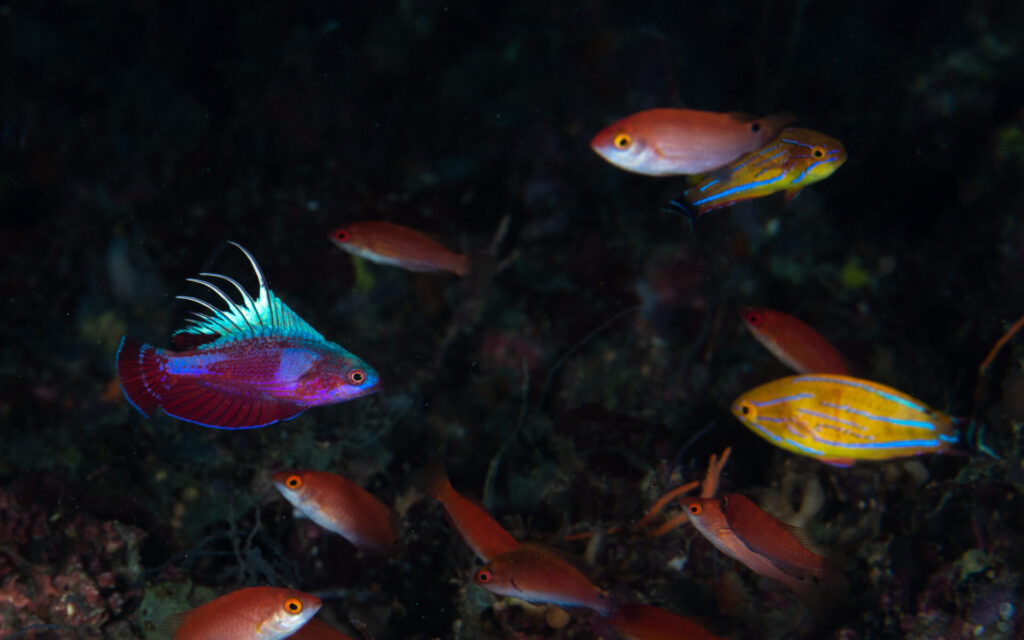

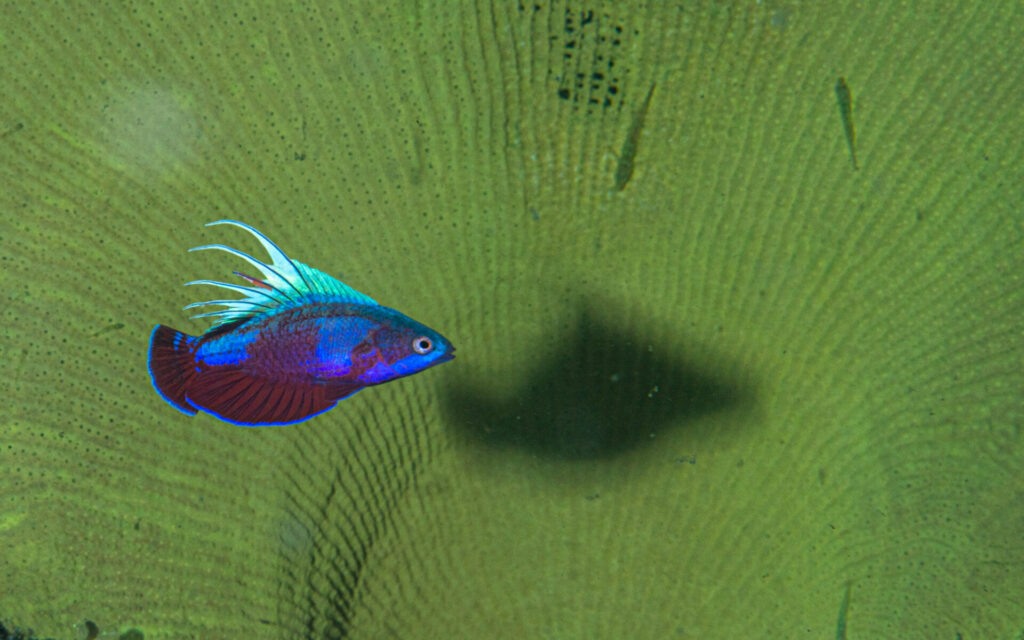
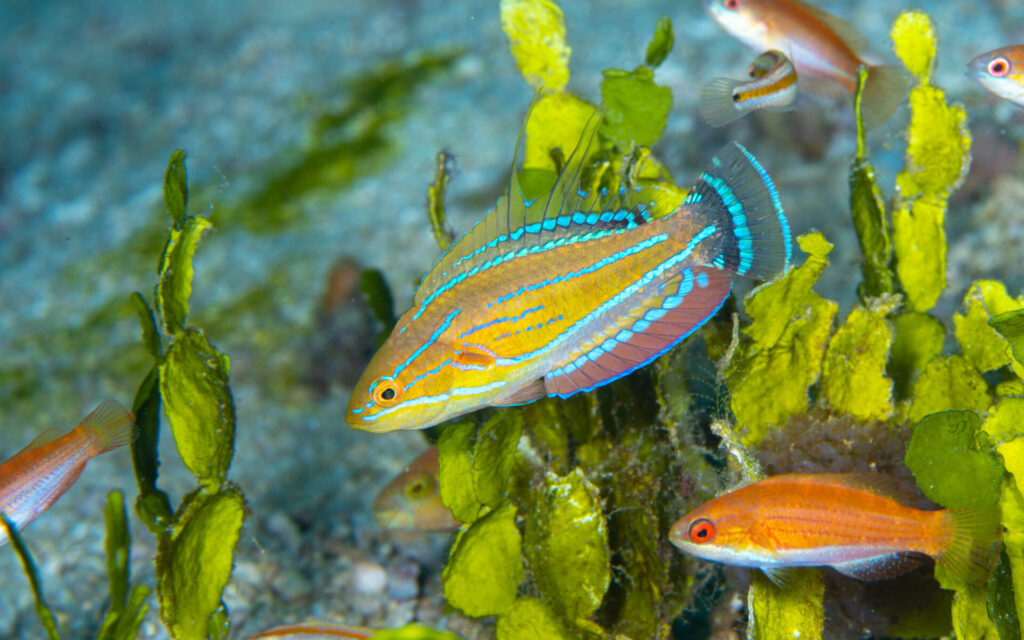
お次はセブのマクタンから、ラインスポットフラッシャーラス(Paracheilinus lineopunctatus)とクジャクベラ(Paracheilinus carpenteri)です。日が沈んで水中が暗くなってくるにつれて、集団が臨戦態勢に入ってくる様子は、怪しく美しい瞬間であり、胸が高鳴ります。
Moving on to Mactan, Cebu, we have the Spot-lined Flasher Wrasse (Paracheilinus lineopunctatus) and the Carpenter’s Flasher Wrasse (Paracheilinus carpenteri). As the sun sets and the underwater environment darkens, their gradual transition into a battle formation in groups is a mysteriously beautiful moment that makes the heart race.
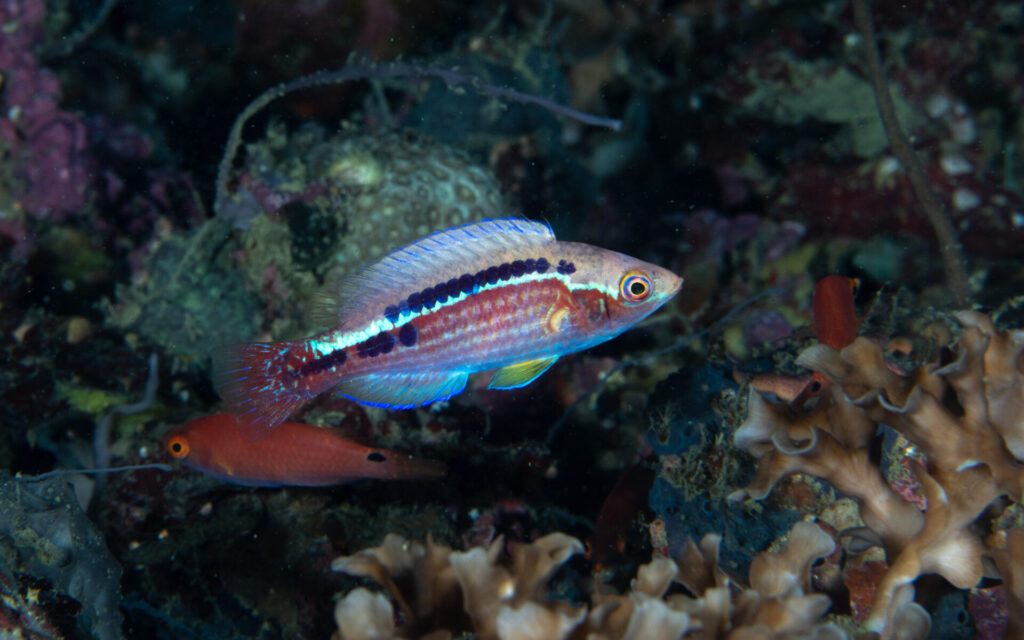
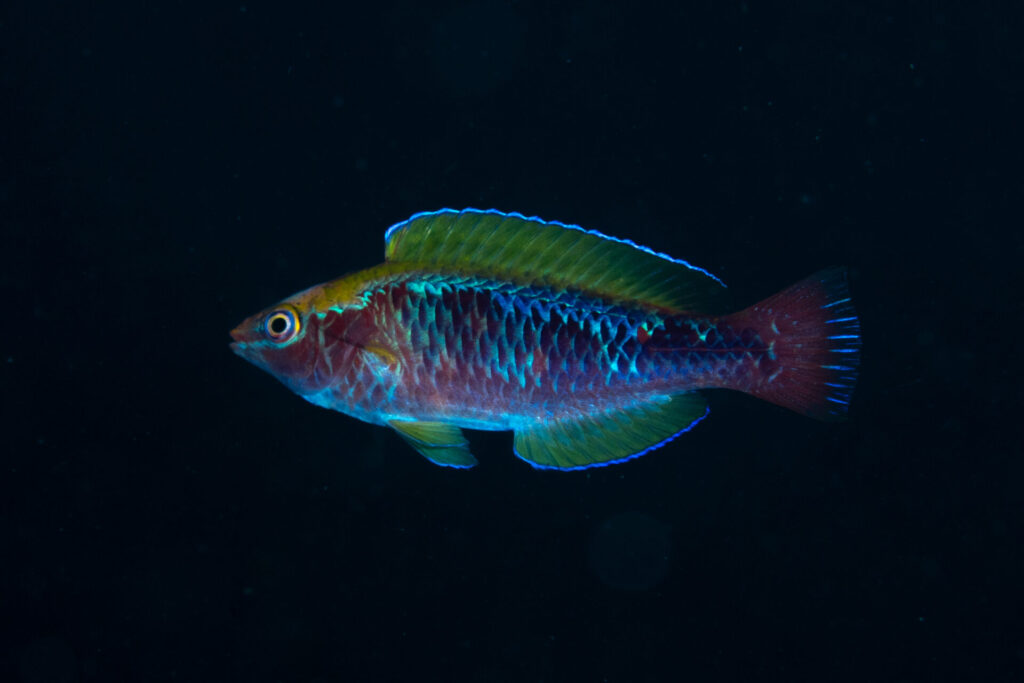
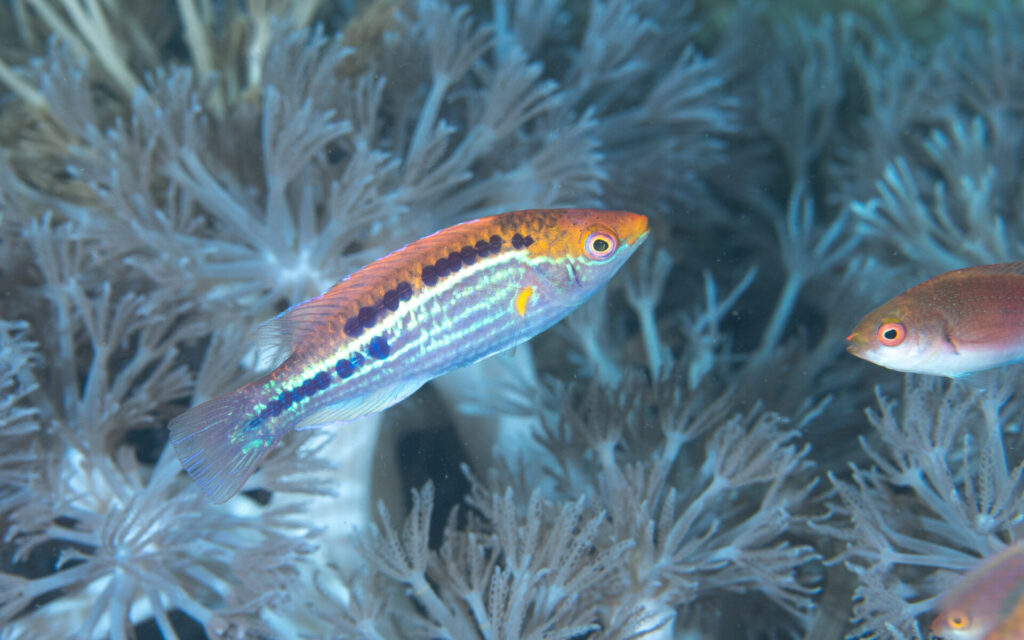
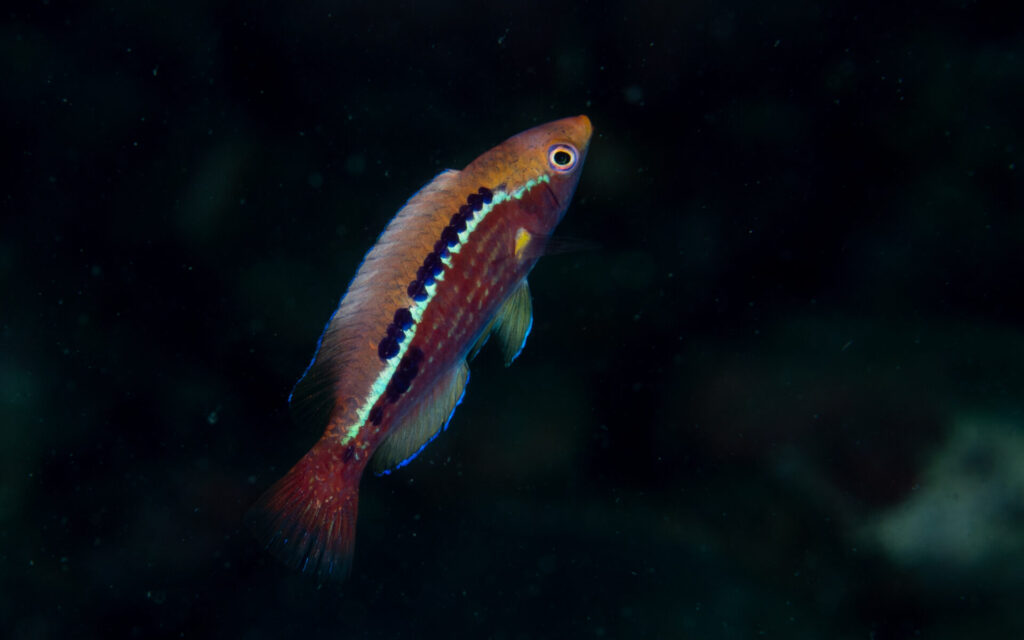
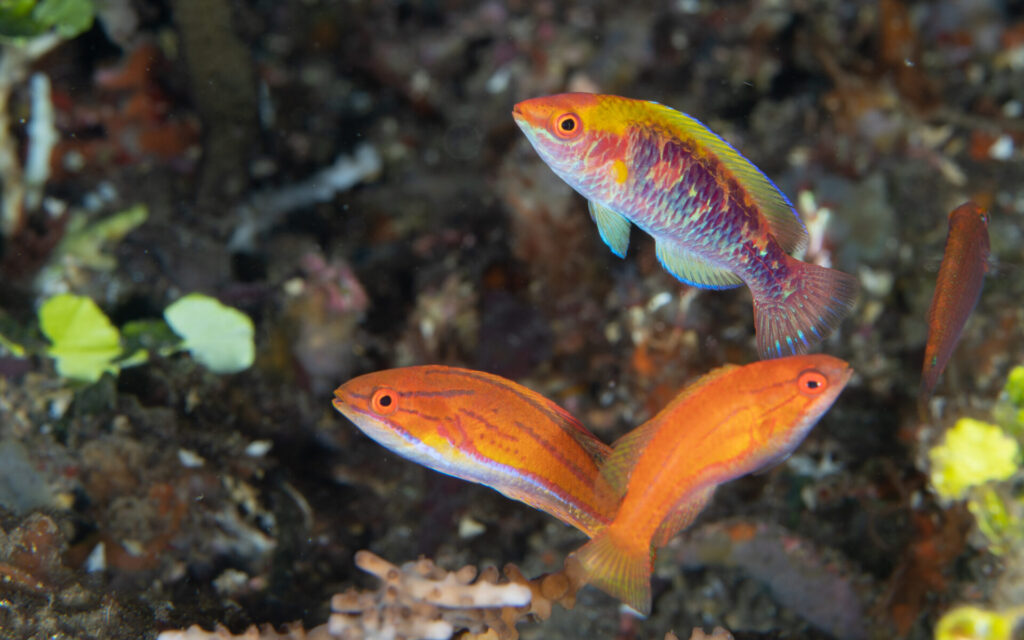
ラボックスラス(Cirrhilabrus lubbocki )です。レンベや、バリ、セブと東南アジアには広く分布している種であると思われ、これまでに上げたベラたちと混泳し、メスを追いかけまわす様子を度々目にします。全長はどれよりも小さいですが、泳力はNo.1であり、目にもとまらぬ速さで泳ぎ去ります。興奮の度合いによって大きく体色が変化し、本気の婚姻色になると小豆色のような赤になります。
Here we have Lubbock’s Fairy Wrasse (Cirrhilabrus lubbocki). It is widely distributed in Southeast Asia, including Lembeh, Bali, and Cebu. While coexisting with the wrasses mentioned earlier, it is often seen chasing females. Despite being the smallest in size, it boasts the highest swimming ability, darting away at an incredible speed. The intensity of its excitement reflects in its coloration, with a deep red when it reaches the serious breeding phase.
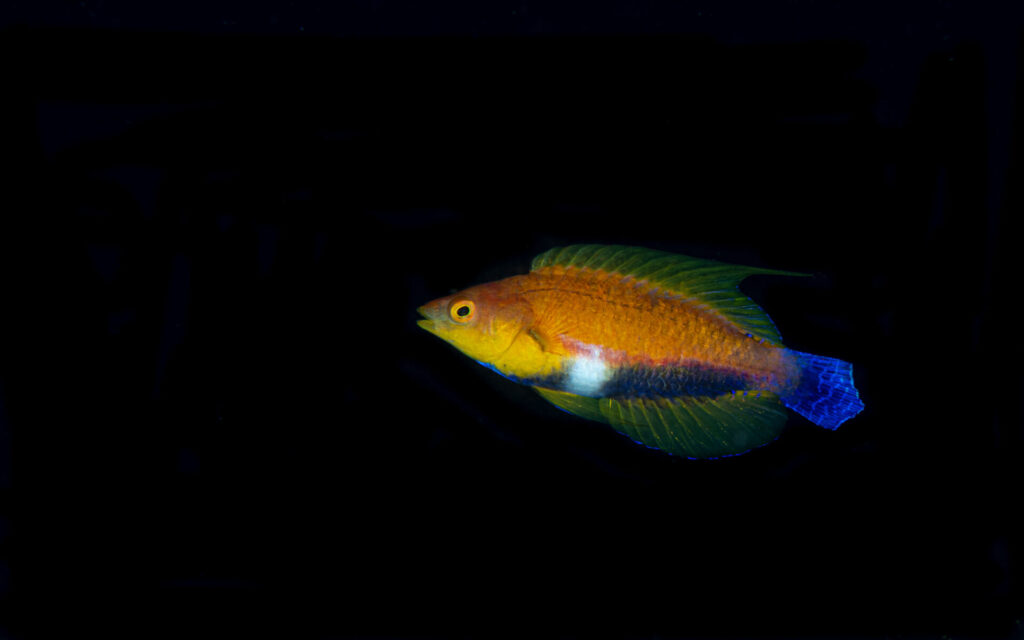
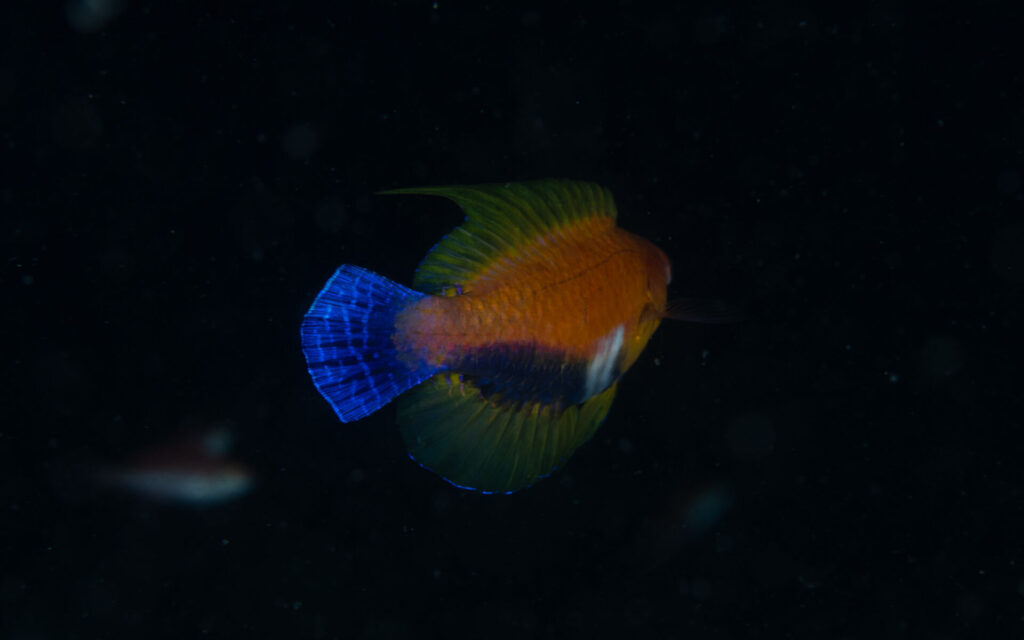
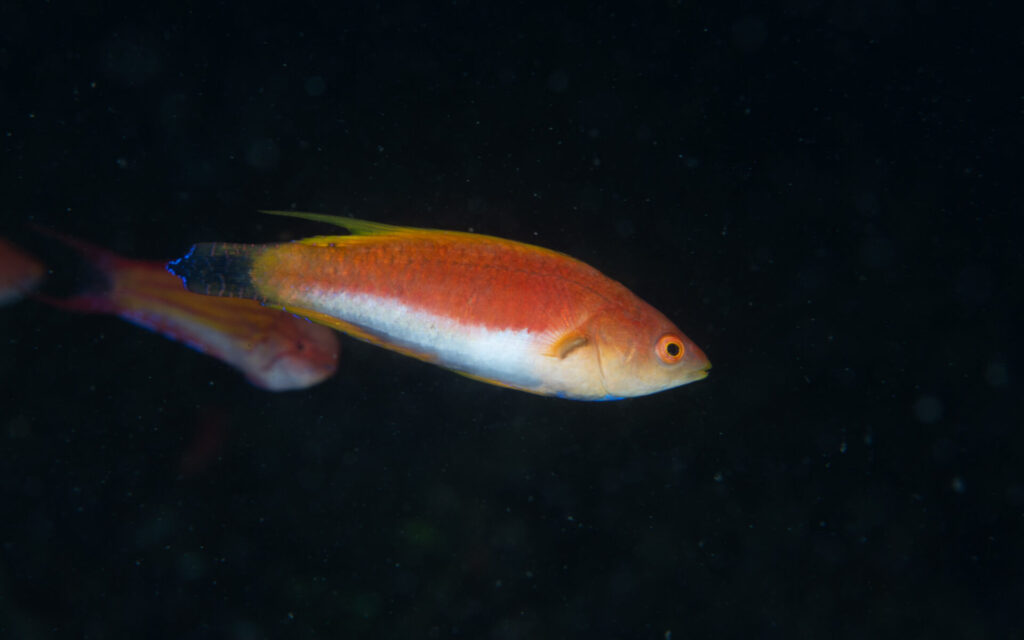
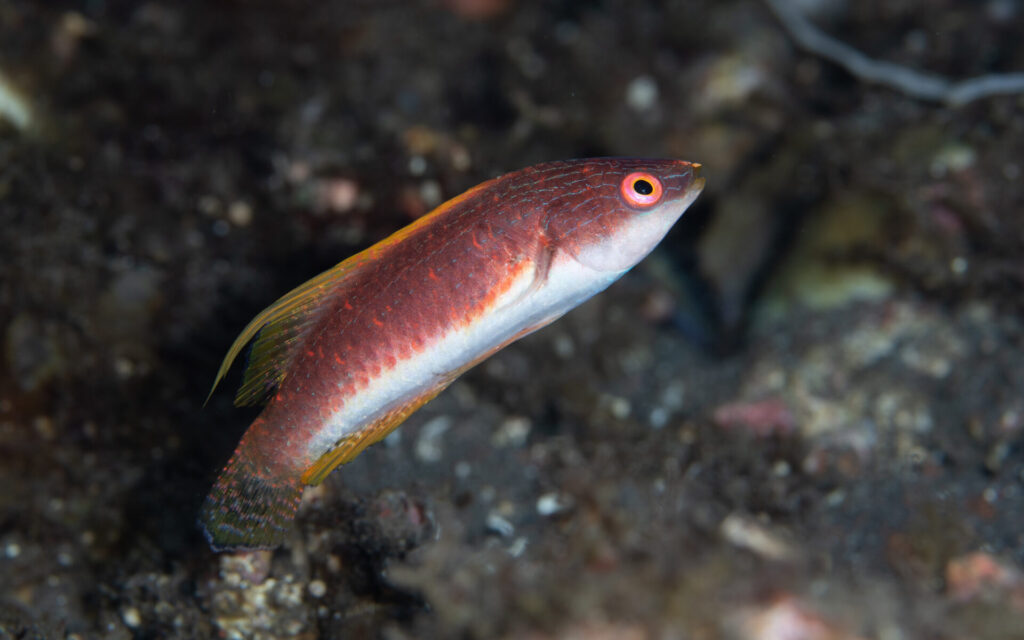
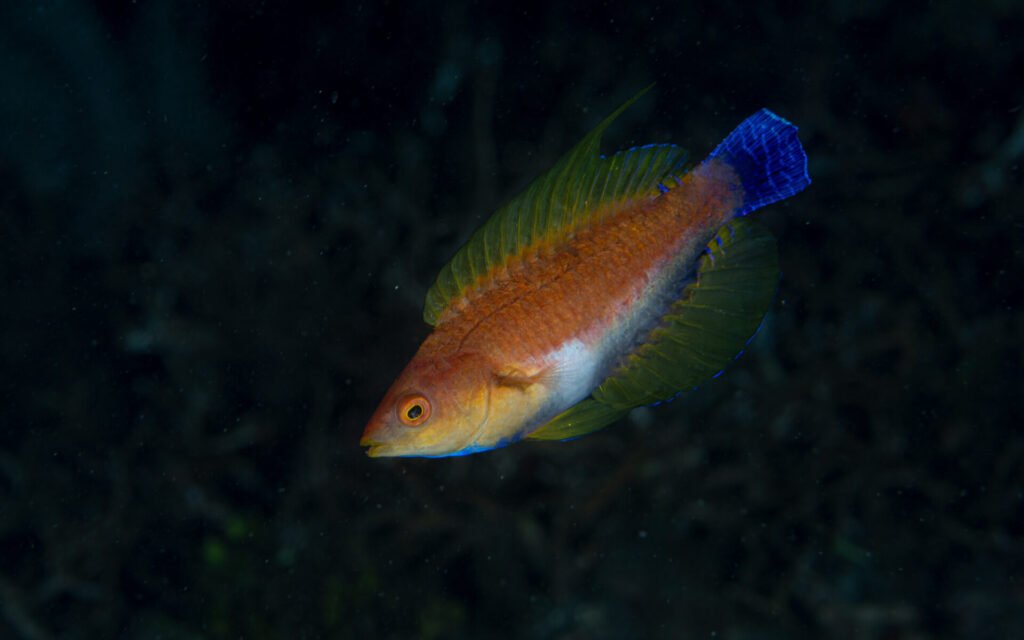
ウィップフィンラス(Cirrhilabrus filamentosus )といいます。レンベで観察することができました。婚姻色における鮮やかな黄色がかったオレンジの体色、青く光り輝く尾鰭が印象的です。興奮してくると腹側が黒くなってきて、白い部分の面積が小さくなります。バリ島でも見ることができましたが、フラッシングはしていませんでした。
This is the Whip Fin Fairy Wrasse (Cirrhilabrus filamentosus), observed in Lembeh. It features a vibrant orange body with hints of yellow and a strikingly luminous blue tail fin. As it gets excited, you can observe the underside turning black, and the area of white diminishing. Although I also encountered it in Bali, it wasn’t displaying flashing behavior there.
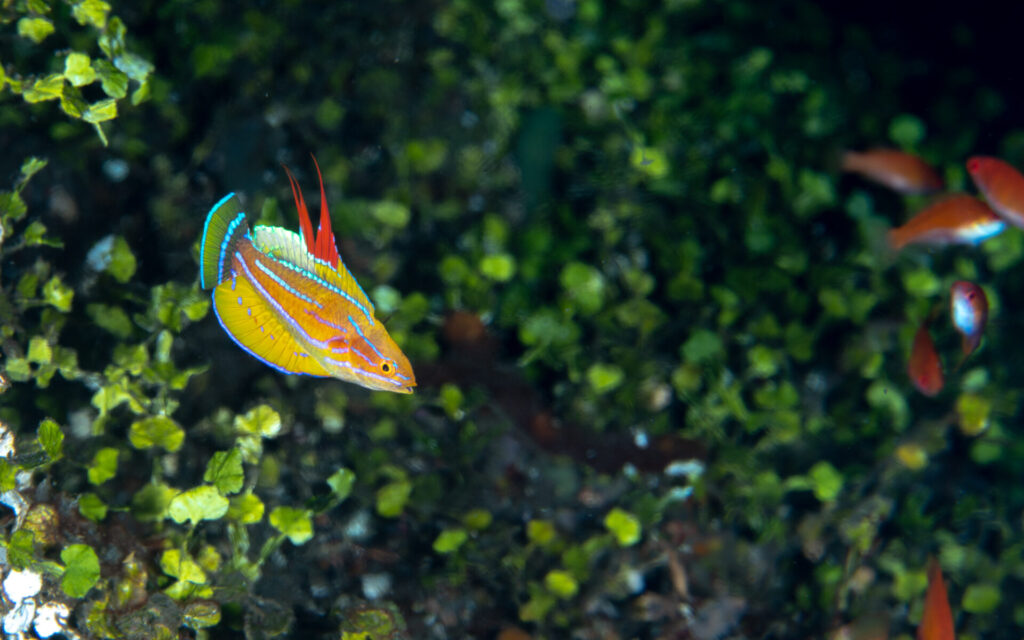
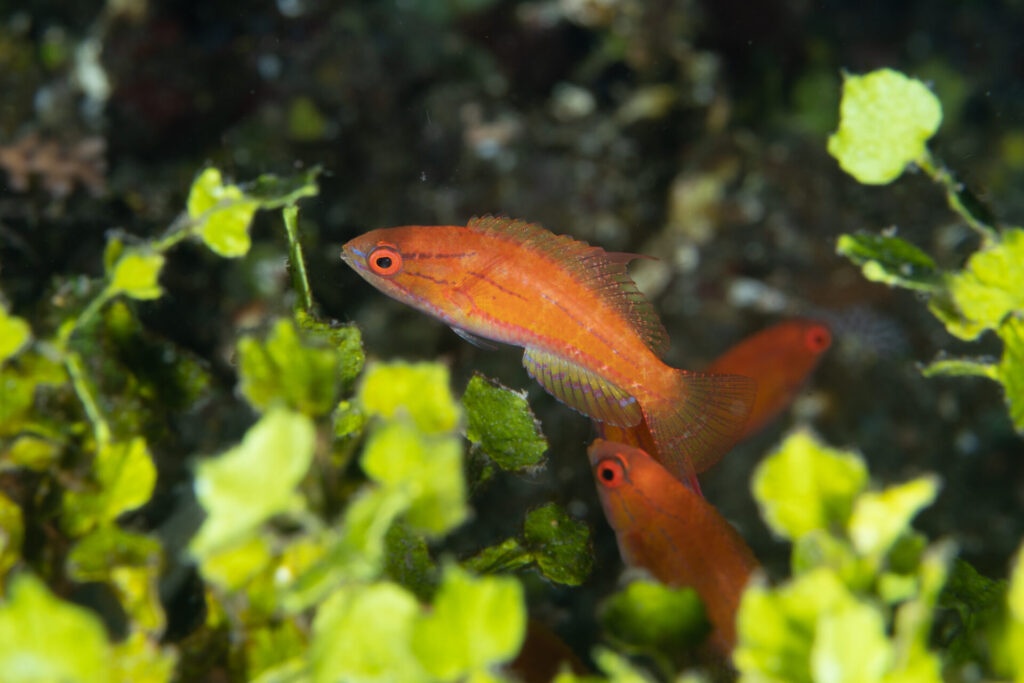
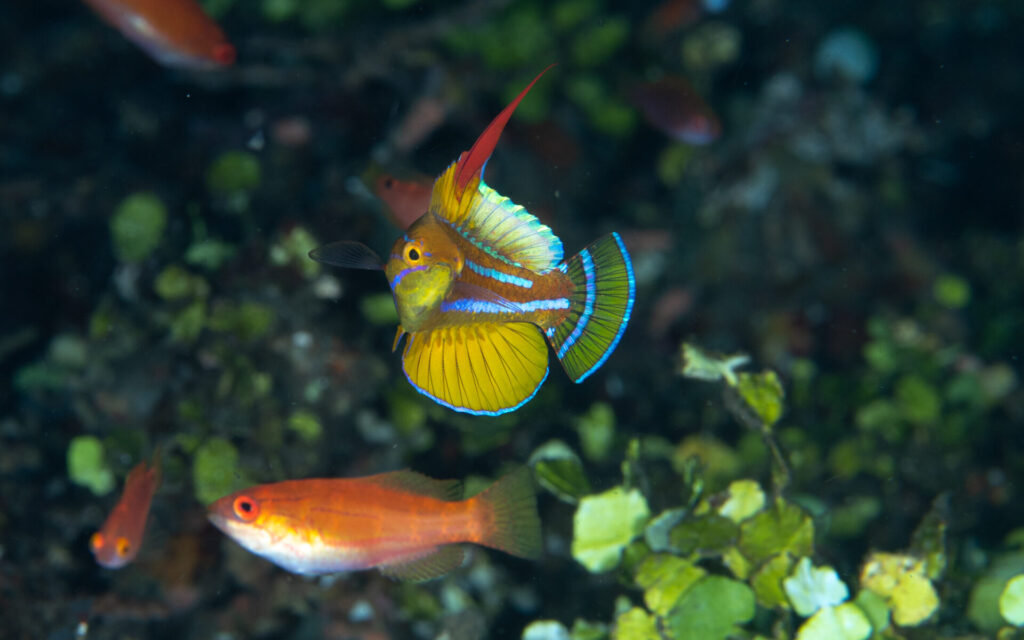
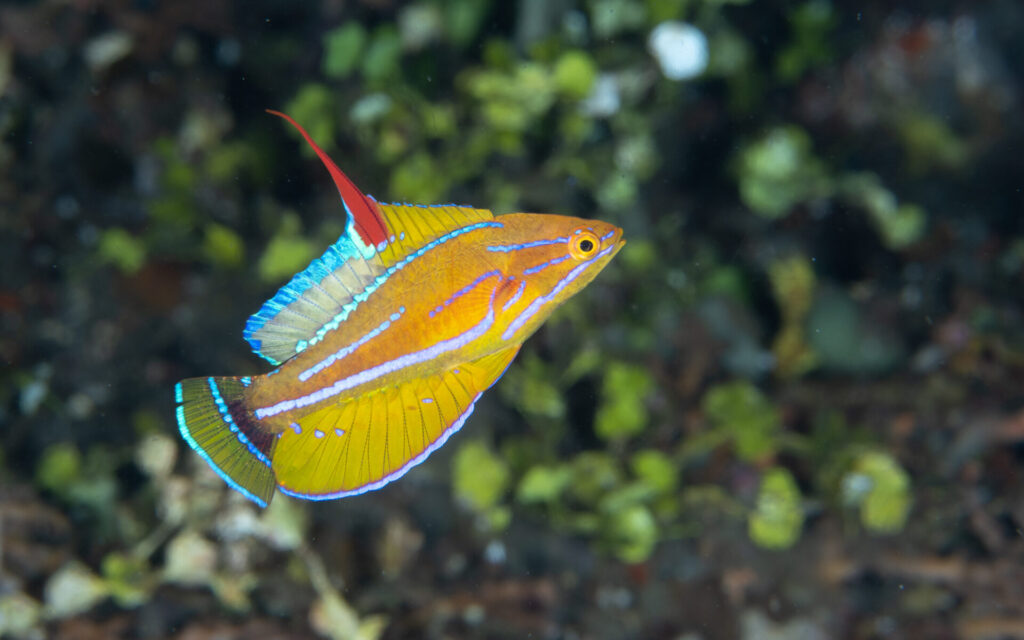
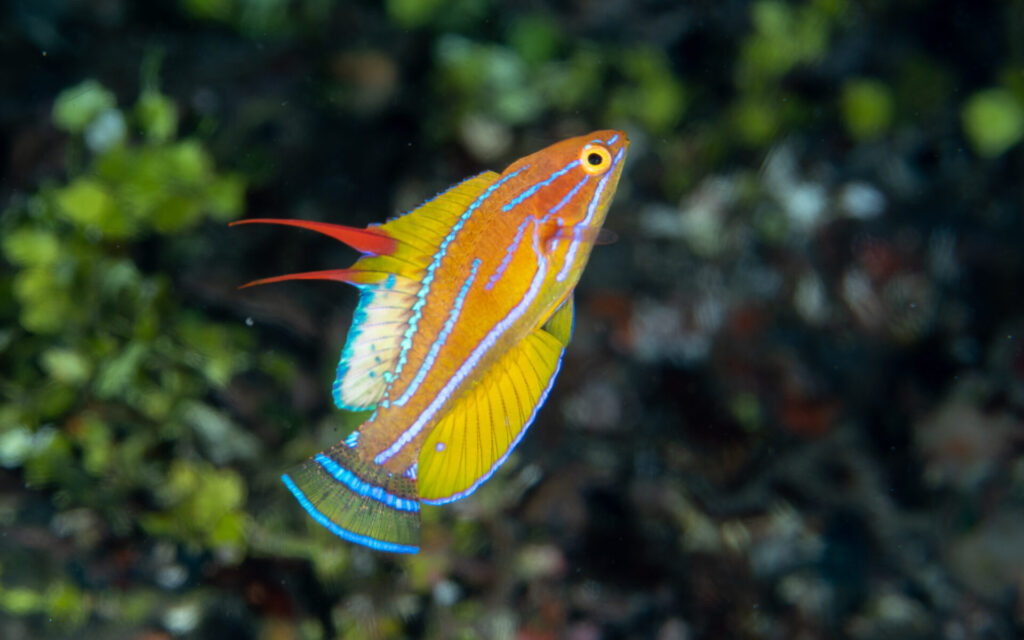
イエローラインフラッシャーラス(Paracheilinus flavianalis)です。バリで観察したものですが、長く伸びた背鰭の赤が時に1本であったり、2本であったりします。鮮やかな黄色が美しい種です。
This is the Yellow-Lined Flasher Wrasse (Paracheilinus flavianalis), observed in Bali. When watching, you may notice that the long, extended dorsal fin can sometimes be singular or split into two. It is a stunning species with a vibrant yellow color.
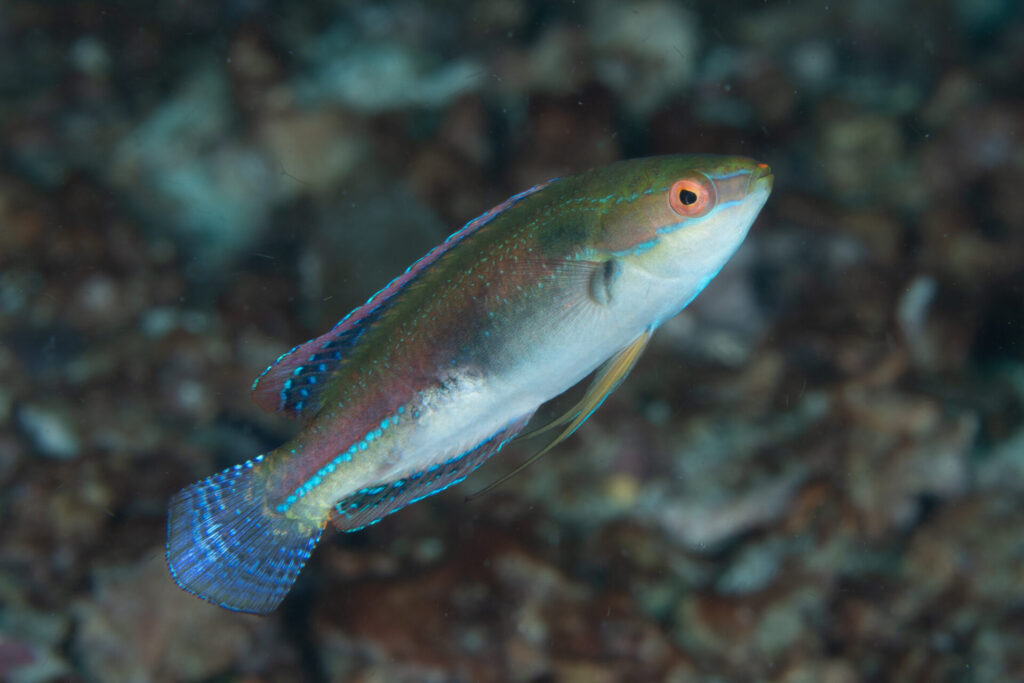
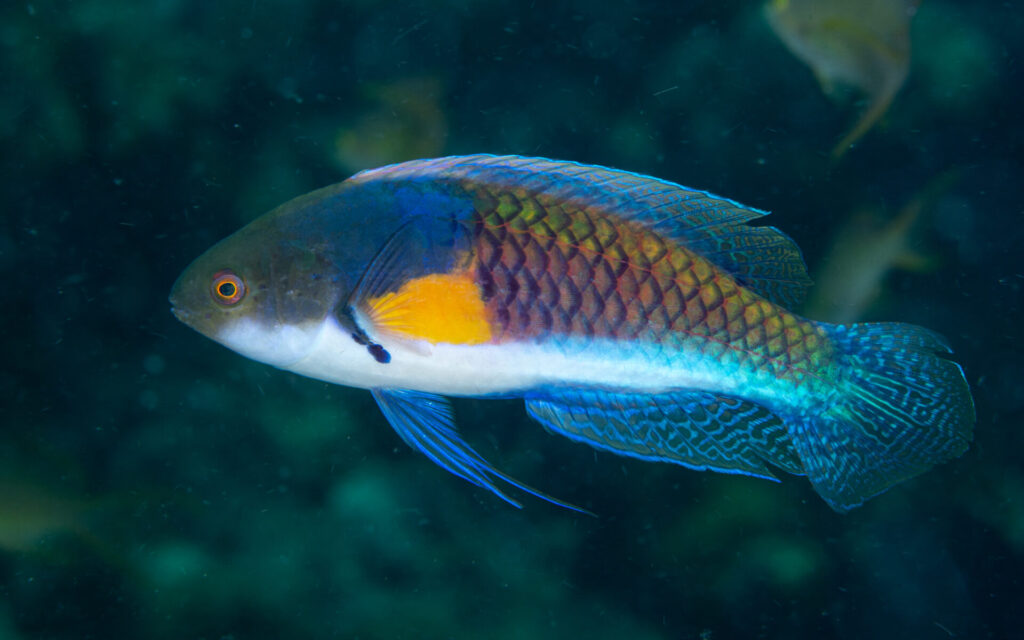
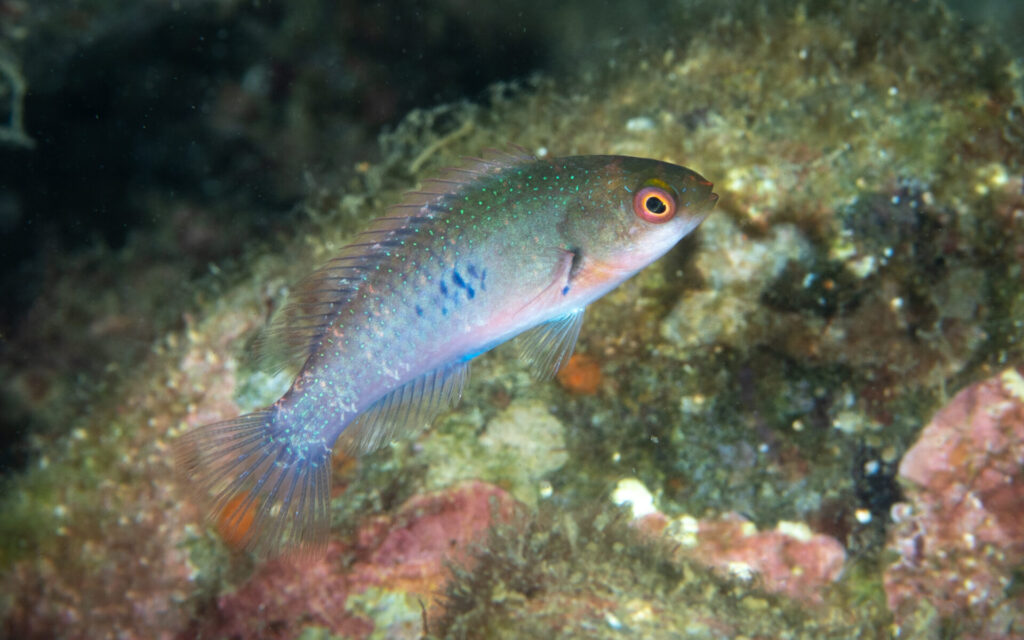
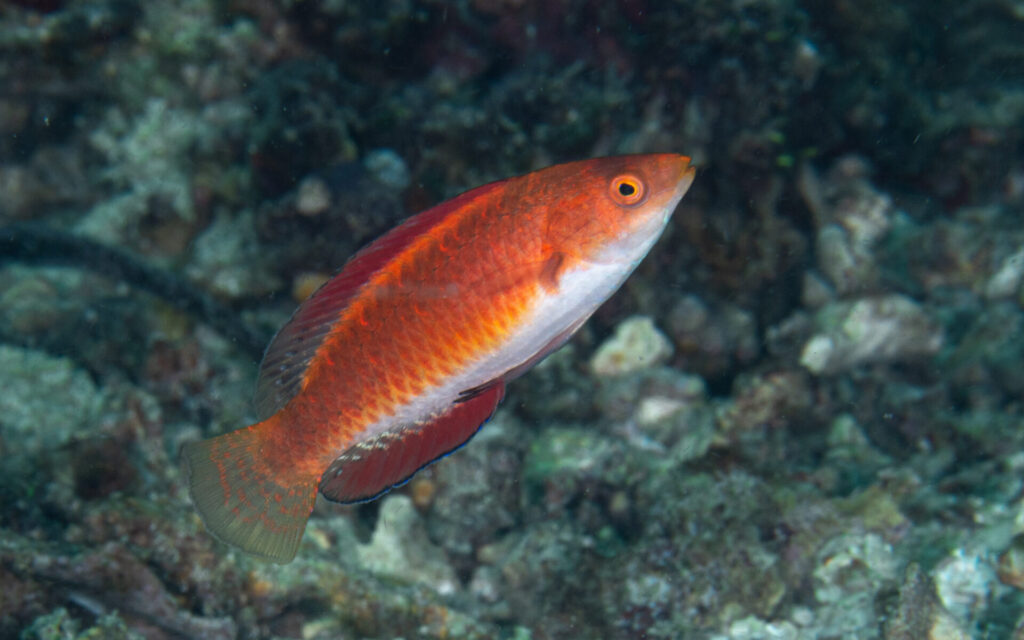
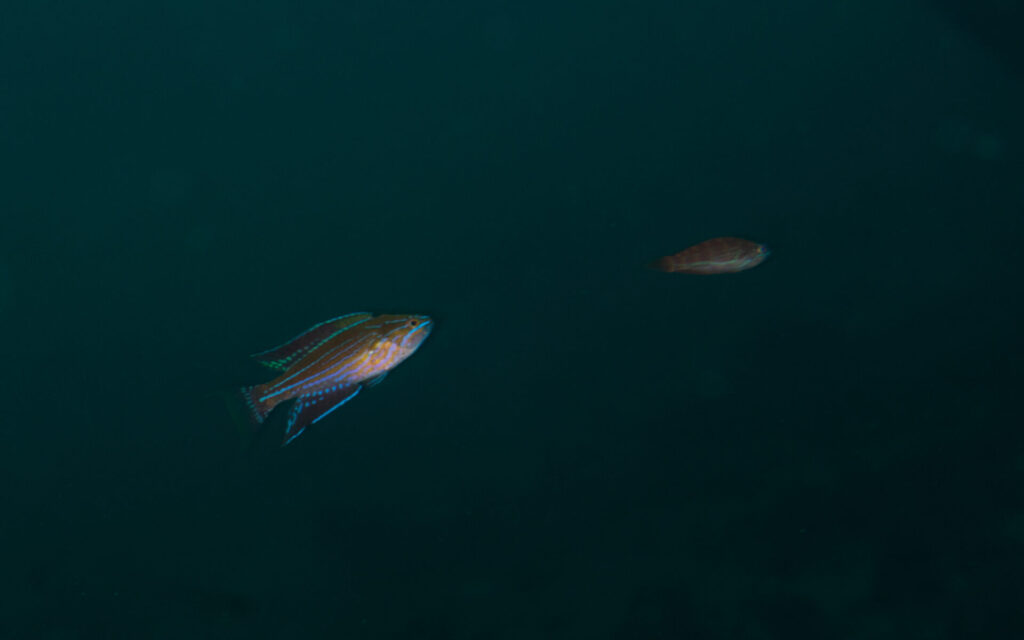
最後にまとめて幾つかを。アンギュラーラス(Paracheilinus angulatus)はアニラオで撮影したものであり、セブにはいないようです。他のどの種とも異なる独特な背鰭の形が魅力であり、再度撮影に行きたいです。4枚目はルソンイトヒキベラ(Cirrhilabrus rubripinnis)鰭が全開になると非常に豪華です。
In summary, here are several species. The Angular Wrasse was captured in Anilao and seems to be absent in Cebu. Its distinctive dorsal fin shape, different from any other species, is captivating, and I look forward to capturing it again. Also we have Redfin wrasse, and its dorsal fin is exceptionally luxurious when it is fully opened.